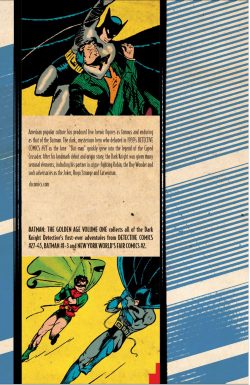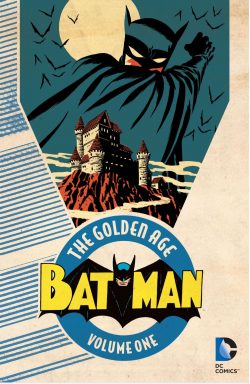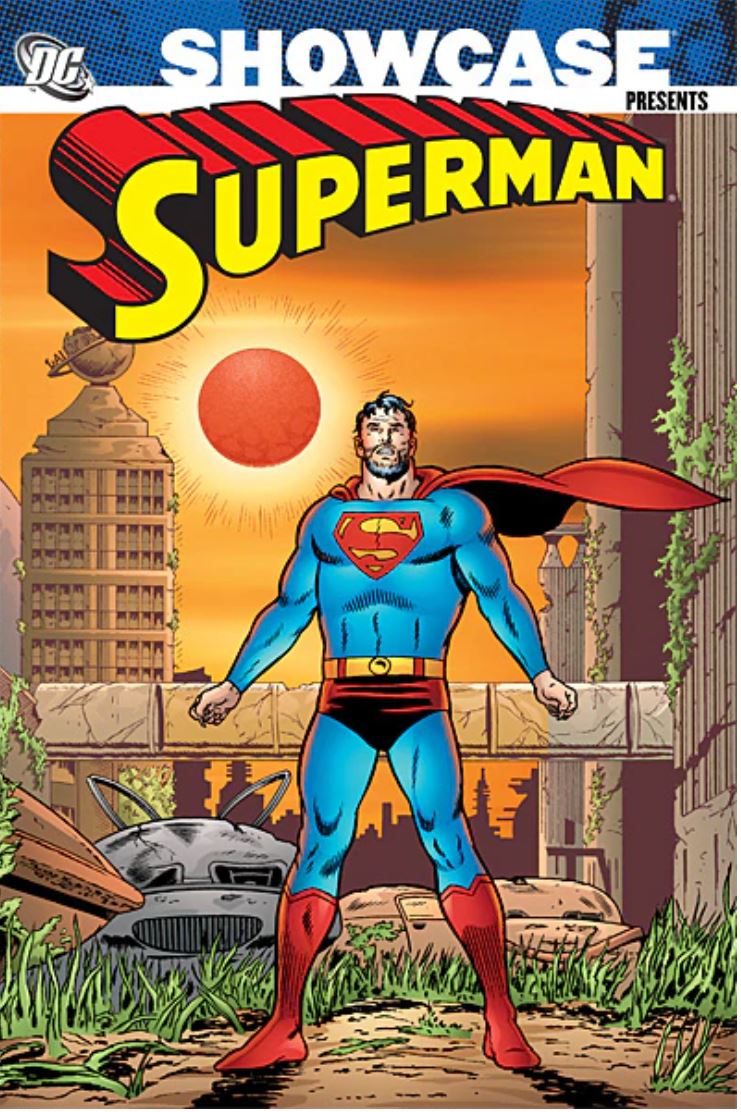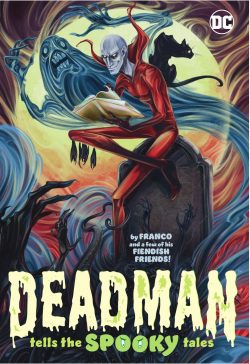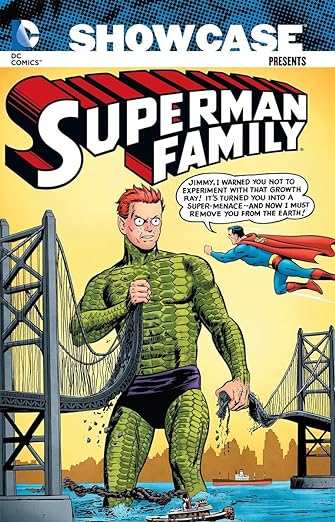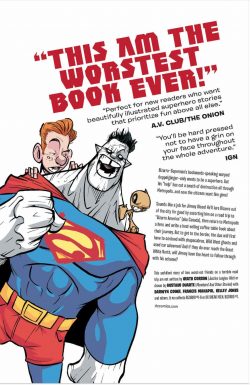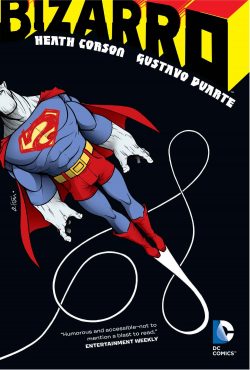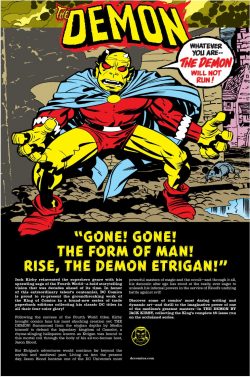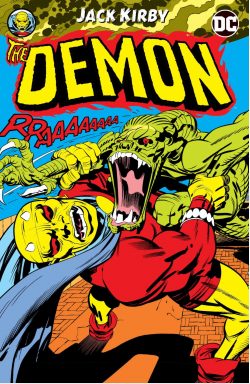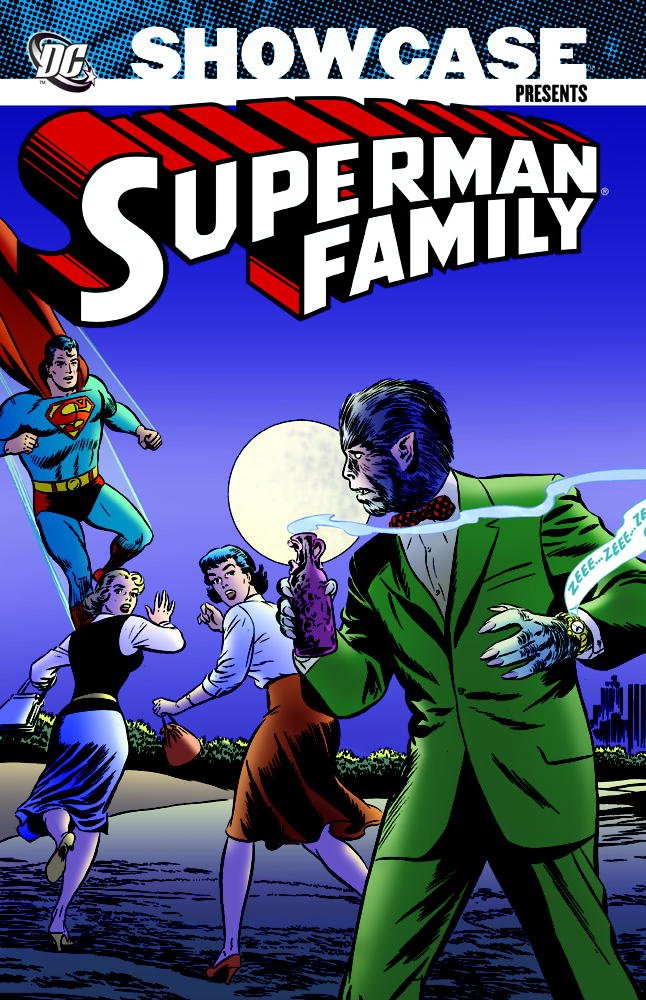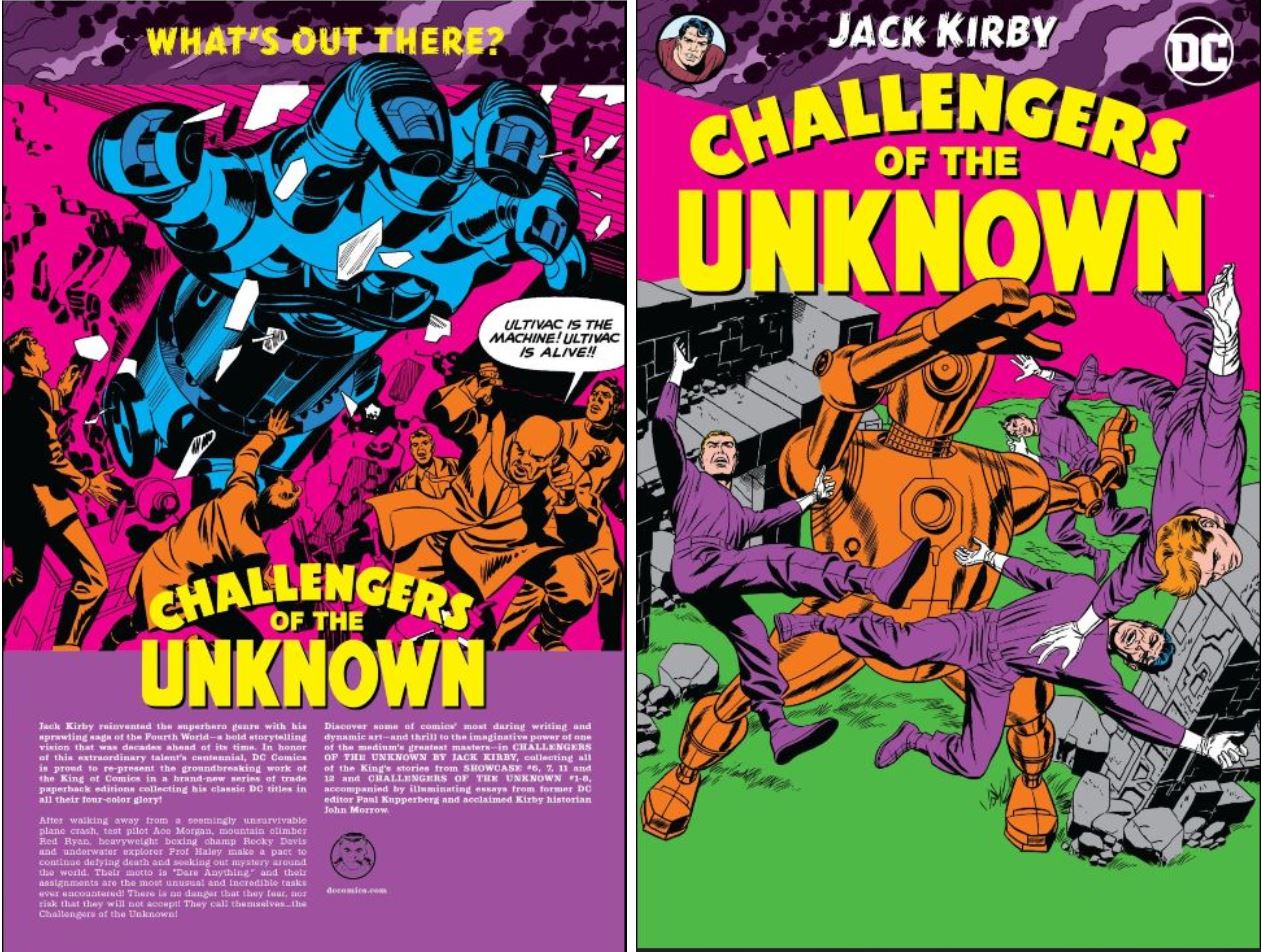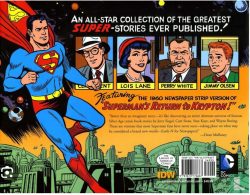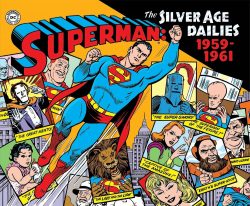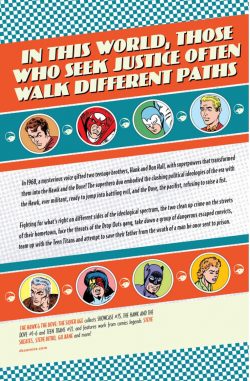
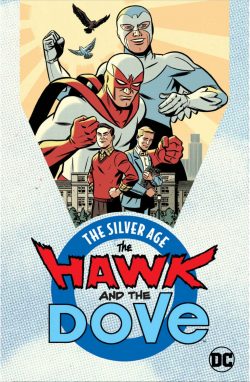
By Steve Ditko, Gil Kane, Neal Adams, Nick Cardy, John Celardo, Sal Trapani, Wally Wood & various (DC Comics)
ISBN: 978-1401278052 (TPB/Digital edition)
Win’s Christmas Gift Recommendation: For a Season of Heated Family Debates… 9/10
The 1960s changed the world, especially in comics. Fresh ideas, new freedoms, young talents emerging and a growing assurance among established creators that what they were doing mattered and had lasting relevance generated a wave of inspiration and new characters everywhere. Not all of them hit home, but all have lasting significance. Happy Anniversary Hawk & Dove…
Steve Ditko was one of our industry’s greatest and most influential talents and – in his lifetime – one of America’s least lauded. Reclusive and reticent by inclination, his fervent desire was always just to get on with his job, telling stories the best way he could: letting his work speak for him. Whilst the noblest of aspirations, that attitude was usually a minor consideration – and even an actual stumbling block – for the commercial interests which controlled all comics production back then and still exert an overwhelming influence upon the bulk of mainstream comic industry output. If you need more biographical background, there are plenty of wonderful books or even that internet stuff to find it. I’m sticking to his wish to have the stories tell you all you need to know…
After his legendary disagreements with Stan Lee led to Ditko quitting Marvel he worked at Warren Publishing and resumed his career-long association with Charlton Comics. Their laissez faire editorial attitudes always offered virtual creative freedom, if not great financial reward, but when their trailblazing editor Dick Giordano was poached by rapidly-slipping industry leader DC Comics in 1968, he brought with him some of his bullpen of key creators.
Whilst Jim Aparo, Steve Skeates, Frank McLaughlin and Denny O’Neil found a new home, Ditko began only a sporadic – if phenomenally fruitful – association with DC.
During this heady, unsettled period, the first strips derived from Ditko’s interpretation of novelist Ayn Rand’s Objectivist philosophy began appearing in fanzines and independent press publications like Witzend and The Collector – an avenue of freer expression the artist wholeheartedly embraced in an era of social rebellion. For the “over-ground” publishing colossus DC, he devised numerous short stories for genre anthologies and a brace of cult classics. Beware The Creeper came first, followed by the superbly captivating concept gathered here: The Hawk and the Dove. Later visits to the house of Superman & Batman generated Shade, the Changing Man, Stalker and The Odd Man, plus truly unique reinterpretations of The Demon, Man-Bat, Legion of Super-Heroes and many more…
This slight but superb compilation gathers every Ditko-drafted episode of a feature very much of its time plus those who took up the task when he left: curating Showcase #75, The Hawk and the Dove #1-6 and Teen Titans #21, covering May/June 1968 to May/June 1969.
The domestic drama of a family at war naturally opens ‘In the Beginning’ (Showcase #75, with Ditko doing everything except dialoguing which was left to relative youngster Steve Skeates) as high school kids Don and Hank Hall resume their heated quarrel about what American society needs to be. Don is left-leaning pacifist and younger brother Hank is savagely reactionary: pro-military, pro-patriot and anti-dissent of any kind. It was a situation played out all over the world at that crucial stage of the Vietnam war as a new generation turned away from what their parents held dear…
The Hall boys’ paternal parent was doctrinaire small town Judge Irwin Hall of Elmond County: handing out harsh but fair pronouncements that were the cause of a minor superhero moment. When he throws the book at convicted racketeer Dargo, it sparks a wave of violent reprisals and assassination attempts that hospitalise the Judge. Constantly arguing their irreconcilable views, Don and Hank follow one gangster they suspect and are trapped in a warehouse, helpless to prevent a follow-up murder attempt. Their mounting panic and frustration ends when a mysterious voice magically grants them superpowers and costumed identities based on their divergent worldviews and allowing them to escape and foil the killers…
The gift only activates “when evil is present” and also magnifies their ability to act out their philosophical standpoint, and in typical Ditko manner is heartily vilified by the Judge who advocates the rule of law and enforcement of elected authority over criminal vigilantism…
Reaction was strong enough to warrant a solo series and cover-dated August/September that year, The Hawk and the Dove #1 (again scripted by Skeates) revealed ‘The Dove is a Very Gentle Bird’ as teen thieves The Drop-outs plunder at will, with Dove Don and Hawk Hank taking very different approaches to stopping them. The concept of the warring brothers was fascinating but extremely flawed in comic book terms.
Hawk happily smashed everything in traditional Fights ‘n’ Tights style whilst Dove second-guessed his own every action, enduring all kinds of permutation to be dynamic and proactive without ever actually hitting anyone: a definition of pacifism that struggled with itself…
The dichotomy clearly affected Ditko, who abandoned his creation after only three stories, although his swansong ‘Jailbreak’ (H&D #2 Ditko & Skeates) is a mini-masterpiece perfectly embodying all those innate contradictions to craft a powerful tale of ideology and redemption. When the Hall family vacation is overtaken by a mass prison escape, crazed killer Harker forces hopeless, despondent career-convict Davis and a genuinely-reformed young parolee to escape with him, intending to sacrifice them to aid his getaway. When Harker takes the Halls hostage, Hawk and Dove manifest, but as the belligerent bird-boy brutalises Davis and the many escapees he brought along, the repentant parolee saves the hostages whilst Dove stubbornly defeats Harker by taking the beating of his life and wearing his opponent down. Here, the true victory belongs to Don and the system that punishes the guilty and rewards the rule-followers: hardly a radical challenge to the social issues the series sought to redress…
The Hawk and the Dove #3 (December 1968/January 1969) brought a big creative change but more thematic confusion as Gil Kane & Sal Trapani joined Skeates for a brace of crime mysteries. ‘After the Cat’ has the heroes hunt a violent costumed burglar, where Dove’s principles directly lead to tragedy and death after which ‘Twice Burned!’ finds the avian avengers helpless when a savage assault and travesty of justice leads an angry teenager into vengeful violence…
Skeates, Kane & Trapani advanced the themes of ideology versus family bonds in #4 as ‘The Sell-Out!’ sees a mayoral run implicate Judge Hall in wrongdoing when Hawk and Dove expose their father’s oldest political ally as a murdering criminal mastermind funding his campaign through forgery and art theft…
The inevitable occurs in #5 when Kane takes over scripting and Wally Wood assumes the inker’s role in ‘Walk With Me O’ Brother… Death Has Taken My Hand!’
A pre-WWII infant immigrant from Latvia born Eli Katz, Gil Kane was a pivotal player in the developing US comics industry, and indeed the art form itself. Working as an artist, and an increasingly more effective and influential one, he drew for many outfits from 1942 on, tackling superheroes, crime, action, war, mystery, romance, animal heroes (Streak, Rex the Wonder Dog!), movie adaptations Westerns and Science Fiction tales.
In the late 1950s he became one of Julie Schwartz’s key artists: regenerating and rebooting the superhero concept. Yet by 1968, at the top of his profession, this relentlessly revolutionary and creative man felt so confined by the juvenile strictures of the industry that he struck out on bold new ventures that jettisoned the editorial and format bondage of comic books for new visions and media. His Name Is Savage was an adult-oriented black & white magazine about a cold and ruthless super-spy in the James Bond/Matt Helm/Man Called Flint mould; co-written by friend and collaborator Archie Goodwin. It was very much a precursor in tone, treatment and subject matter of many of today’s adventure titles.
His other venture, Blackmark (1971, also with Goodwin), not only ushered in the comic book era of Sword & Sorcery, but also became one of the medium’s first Graphic Novels. Technically, as the series was commissioned by fantasy publisher Ballantine as 8 volumes, it was also envisioned as America’s first comic Limited Series. Before them, though, there was Captain Action and The Hawk and The Dove. At this moment Kane was eager to stretch his creative muscles in a period of great change and challenge and editor Dick Giordano was happy to oblige…
The tale of betrayal and rage sees Irwin Hall uncharacteristically intercede when old friend and literal life-saver Sam Hodgins is framed for armed robbery and murder. When Hawk and Dove investigate they discover a shocking truth that leads to Hank Hall being near-fatally injured as Don – losing his mind with grief – betrays his principles in pursuit of vengeance, not justice…
The tale leads into Teen Titans #21 (June 1969) and a landmark guest shot in DC’s other young heroes title. Written by Neal Adams, pencilled by him and Sal Amendola with inks from brush-maestro Nick Cardy – one of the all-out prettiest illustration jobs of that decade – the tale is centrepiece of a triptych tale spanning TT #20-22.
Facing interdimensional invasion spearheaded by a human multinational crime gang, Titans (Kid Flash, Robin, Wonder Girl and Speedy) are briefly joined by our symbolic super-teens for ‘Citadel of Fear’: chasing smugglers, facing evil ETs and ramping up the surly teen angst quotient whilst moving the invaders story-arc towards a stunning conclusion that you’ll have to read elsewhere…
The unstoppable superhero recession of the late 1960s generated incredible and bold experiments, but all those groundbreaking advances went unheeded and unheralded – except by the next generation of comic creators who benefitted from them. Back then, costumed hero books fell like dominoes and The Hawk and The Dove died with #6 (June/July 1969, by Kane & John Celardo). ‘Judgment in a Small Dark Place!’ again focusses on Judge Hall as the son of a man he jailed years previously targets the family before kidnapping and torturing the draconian lawgiver.
Unable to cooperate, the boys search for him separately, but in the end it’s Hawk’s mindless violence that solves the problem and – as usual – Hall’s ungrateful response is seeking to arrest the lawless vigilantes…
This little slice of obscure hero history also includes spectacular covers by Ditko, Kane and Cardy.
The Sixties was the era when all assorted facets of “cool-for-kids” ephemera finally started to coalesce into a comprehensive assault on our minds and our parents’ pockets. Music, TV, movies, comics, bubble-gum cards and toys all began concertedly feeding off each other, building a unified and combined fantasy-land no kid could resist, but there was also deep and permanent change to the culture and social consciousness and kids became aware politically active for the first time. Those competing colliding forces have never been more wonderfully expressed than in the stories in this book and you would be mad to miss it.
© 1968, 1969, 2018 DC Comics. All Rights Reserved.

